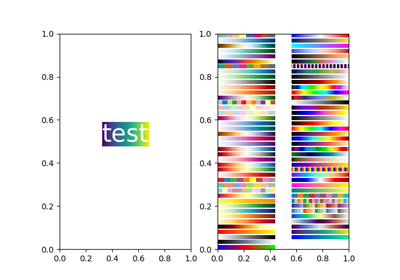

Size is the tick size in points class matplotlib.axis. XTick ( axes, loc, label, size=None, width=None, color=None, tickdir=None, pad=None, labelsize=None, labelcolor=None, zorder=None, gridOn=None, tick1On=True, tick2On=True, label1On=True, label2On=False, major=True ) ¶Ĭontains all the Artists needed to make an x tick - the tick line, Tick1line a Line2D instance tick2line a Line2D instance gridline a Line2D instance label1 a Text instance label2 a Text instance gridOn a boolean which determines whether to draw the tickline tick1On a boolean which determines whether to draw the 1st tickline tick2On a boolean which determines whether to draw the 2nd tickline label1On a boolean which determines whether to draw tick label label2On a boolean which determines whether to draw tick labelībox is the Bound2D bounding box in display coords of the Axes Sets up x-axis ticks and labels that treat the x data as dates. Set appearance parameters for ticks and ticklabels. Iterate through all of the major and minor ticks. Set the axis grid on or off b is a boolean. Return the grid lines as a list of Line2D instance Get the tick locations in data coordinates as a numpy array Return the tick lines as a list of Line2D instances Get the x tick labels as a list of Text instances. Return the axis offsetText as a Text instance Get the minor tick locations in data coordinates as a numpy array Return the minor tick lines as a list of Line2D instances Return a list of Text instances for the minor ticklabels Get the minor tick instances grow as necessary Get the major tick locations in data coordinates as a numpy array Return the major tick lines as a list of Line2D instances Return a list of Text instances for the major ticklabels Ticks, tick labels and Offset text ¶ Axis.get_major_ticks scatter ( theta, radius ) ax3, aux_ax3 = setup_axes3 ( fig, 133 ) theta = ( 8 + np. #aux_ax1.scatter(theta, radius) ax2, aux_ax2 = setup_axes2 ( fig, 132 ) theta = np. Note that the extreme values are swapped. _nbins = 4 return ax1, aux_ax def setup_axes2 ( fig, rect ): """ With custom locator and formatter. FloatingSubplot ( fig, rect, grid_helper = grid_helper ) fig. GridHelperCurveLinear ( tr, extremes = ( 0, 4, 0, 4 )) ax1 = floating_axes. rotate_deg ( 30 ) grid_helper = floating_axes. show () #plt.savefig("Test")įrom ansforms import Affine2D import mpl_axes as floating_axes import numpy as np import mpl_helper as angle_helper from matplotlib.projections import PolarAxes from mpl_finder import FixedLocator, MaxNLocator, \ĭictFormatter def setup_axes1 ( fig, rect ): """ A simple one. plot (,, label = "Temperature" ) p3, = par2. plot (,, label = "Density" ) p2, = par1. axis = new_fixed_axis ( loc = "right", axes = par2, offset = ( offset, 0 )) par2. twinx () offset = 60 new_fixed_axis = par2. subplots_adjust ( right = 0.75 ) par1 = host. fig if 1 : host = host_subplot ( 111, axes_class = AA. show () #plt.savefig("Test")įrom mpl_toolkits.axes_grid1 import host_subplot import mpl_toolkits.axisartist as AA import matplotlib.pyplot as plt fig = plt.



# %load from mpl_toolkits.axes_grid1 import host_subplot import mpl_toolkits.axisartist as AA import matplotlib.pyplot as plt if 1 : host = host_subplot ( 111, axes_class = AA.


 0 kommentar(er)
0 kommentar(er)
